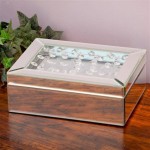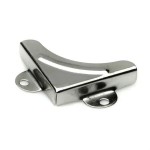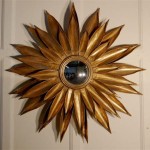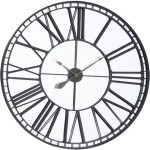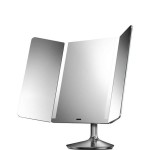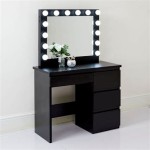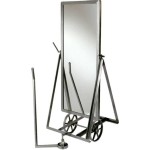Types of Dressers with Mirrors
Dressers with attached mirrors offer both storage and grooming functionality, making them popular bedroom furniture choices. Various styles cater to different aesthetics and needs. Understanding the different types available can assist in selecting the ideal dresser for any bedroom.
Standard Dresser with Mirror: This classic style features a horizontal dresser with a mirror attached to the back. The mirror is typically rectangular and positioned vertically. Standard dressers are available in various sizes, materials, and finishes, making them highly adaptable to different bedroom decor.
Vanity Dresser: Vanity dressers are designed specifically for makeup application and grooming. They typically include a larger mirror, often tri-fold, providing a wider viewing angle. Some vanities feature built-in lighting around the mirror for enhanced visibility. A padded stool or chair is often included for comfortable seating.
Cheval Mirror Dresser: This style combines a dresser with a full-length cheval mirror—a freestanding mirror attached to a frame. The mirror swings independently of the dresser, allowing for adjustments to viewing angle and position. Cheval mirror dressers are ideal for assessing full outfits and offer a space-saving solution for smaller bedrooms.
Landscape Dresser with Mirror: A landscape dresser is wider than it is tall, providing a horizontal orientation. The attached mirror typically follows the same horizontal layout, making it wider but shorter than standard dresser mirrors. This style works well in rooms with lower ceilings or where a more expansive surface area is desired.
Highboy Dresser with Mirror: Highboy dressers are tall and narrow, maximizing vertical storage space. The attached mirror is often tall and narrow as well, complementing the dresser's proportions. This style is a good choice for bedrooms with limited floor space but ample vertical clearance.
Lowboy Dresser with Mirror: The opposite of a highboy, a lowboy dresser is characterized by its short stature and often wider frame. The attached mirror is typically shorter than a standard dresser mirror. Lowboy dressers can create a sense of spaciousness in a room and offer an alternative surface for displaying decor.
Bureau Dresser with Mirror: Bureau dressers feature a smaller footprint than typical dressers and often incorporate drawers and a writing surface, making them multifunctional. The attached mirror is generally smaller and may be hinged to fold down when not in use.
Modern Dresser with Mirror: Modern dressers encompass a wide range of contemporary styles, often featuring sleek lines, minimalist designs, and unique materials. Mirrors can be integrated seamlessly into the dresser design or presented as a separate, contrasting element.
Traditional Dresser with Mirror: Traditional dressers evoke classic design elements, such as ornate carvings, decorative hardware, and rich wood finishes. Attached mirrors often complement the dresser's traditional styling, featuring elaborate frames or beveled edges.
Rustic Dresser with Mirror: Rustic dressers emphasize natural materials and textures, often incorporating distressed wood, metal accents, or reclaimed elements. The attached mirror may feature a similar rustic frame or a simple, unadorned design.
Mid-Century Modern Dresser with Mirror: Inspired by the design aesthetics of the mid-20th century, these dressers feature clean lines, tapered legs, and geometric shapes. The attached mirror often complements the dresser's minimalist design, featuring a simple frame or a geometric shape.
Shabby Chic Dresser with Mirror: Shabby chic dressers embrace a worn, vintage aesthetic, often featuring distressed paint finishes, delicate floral patterns, and ornate hardware. The attached mirror typically complements the dresser's romantic style, featuring a decorative frame or a distressed finish.
Materials and Finishes: Dressers with mirrors are crafted from various materials, including wood, metal, manufactured wood, and combinations thereof. Wood options range from solid hardwoods like oak and cherry to engineered wood products like particleboard or MDF. Metal options include iron, steel, and brass. Finishes range from painted surfaces to natural wood stains, enhancing the dresser's aesthetic and protecting the underlying material.
Size and Scale: Choosing the right size dresser is crucial for ensuring it fits comfortably in the bedroom without overwhelming the space. Consider the available floor space, ceiling height, and overall room dimensions when selecting a dresser and mirror combination. Measure the designated area carefully before making a purchase.
Storage Capacity: Assess your storage needs when selecting a dresser. Consider the number and size of drawers required to accommodate clothing and accessories. Some dressers offer additional storage features, such as shelves behind doors or hidden compartments, providing further organizational options.
Mirror Functionality: The attached mirror should provide adequate visibility for grooming and dressing. Consider the mirror's size, shape, and adjustability. Tri-fold mirrors offer wider viewing angles, while tilting mirrors allow for customized positioning. Ensure the mirror height is suitable for comfortable use.
Style and Design: The dresser and mirror should complement the overall bedroom decor. Consider the existing furniture, color scheme, and desired aesthetic. Choose a style and finish that enhances the room's design and creates a cohesive look.

Types Of Dressers Chest Styles Countryside Amish Furniture

Types Of Dressers Chest Styles Countryside Amish Furniture

Modern Dressing Table Designs 2024 Latest Design

Stylish Dressing Table Designs For 2024

100 Wooden Dressing Table Designs Mirror Design

Cambridge Oak Dresser With Mirror Countryside Amish Furniture

15 Types Of Dressers Chests To Clothes In Style Worst Room

Anri Dresser Mirror Home Centre Oman

Furniture Of America Nesika 7 Drawer Pink Dresser With Mirror And Care Kit 76 75 In H X 58 5 W 17 D Idf 7130pk Dm K The Home Depot

Chest Of Drawers Dresser Or Bureau
See Also

